 EN
EN
 PT
PT
Quick guide for teachers - Kindergarten
Product: Book
Trim size in cm: 14x21cm
Pages: 140
ISBN: 978-88-590-2761-4
Publication date: 01/03/2022
Suitable for: Nursery 1st Level (ages 3-4), Nursery 2nd Level (ages 4-5)
REQUEST A SAMPLE OR MORE INFORMATION
 Rights sold to:
Ukraine, Arabic language worldwide, Spain, Greece, Brazil
Rights sold to:
Ukraine, Arabic language worldwide, Spain, Greece, Brazil
The volume, in the style of a Teacher Training notebook, offers kindergarten teachers ready-to-use instructions and the most effective strategies to manage a child with hyperactivity, impulsivity and Inattention, to successfully deal with 15 typical problem behaviours, including those related to emotional aspects. It helps to recognize the communicative meaning of certain behaviours and to organize environments and activities that allow the child to express themselves freely by recognizing boundaries tuned into their needs, indispensable premises for developing both the pleasure of being attentive and the ability to put on the brakes at the appropriate moment.
Structure of the book
The book is divided into 4 macro-sections: Hyperactivity, Impulsivity, Inattention and Emotional aspects, and consists of 15 chapters, each of which analyzes a very common problematic situation. At the beginning of each chapter, there is a bullet-point summary in which some possible explanations of the problematic behaviour under consideration are outlined: Why does he/she do this?
This is followed by brief and simple indications that may be useful to the teacher as a reference point for quickly deciding What to do and reflect on What to avoid, along with a more detailed description of the specific problem behaviour we are working on: Analysis of problematic behaviour.
Finally, the tools and educational strategies to carry out the intervention are outlined in more detail: How to intervene.
The book is completed by the “Observation Chart”, present in the Appendix, and the paragraph, present in each chapter, The educational pact, which contains some ideas to support parents in the educational path of their children.
Each chapter ends with Expert advice: reflections often gained during clinical practice that are useful for understanding and further enriching the teacher’s “suitcase of educational tools”.
Index
HYPERACTIVITY
Chapter 1: Gets up and wanders around the class
Chapter 2: Disturbs classmates
Chapter 3: Leaves everything in disorder
Chapter 4: Breaks materials
IMPULSIVITY
Chapter 5: Interrupts and has no limits
Chapter 6: Doesn’t take turns
Chapter 7: Endangers him/herself
Chapter 8: Does not interiorize rules
INATTENTION
Chapter 9: Doesn’t listen to instructions
Chapter 10: Doesn’t start activities
Chapter 11: Doesn’t finish activities
Chapter 12: Has difficulty changing activities
EMOTIONAL ASPECTS
Chapter 13: Gets angry easily
Chapter 14: Acts defiantly
Chapter 15: Gives up easily
Conclusions
Bibliography
APPENDIX
Worksheets

Kindergarten – Quick guide for teachers
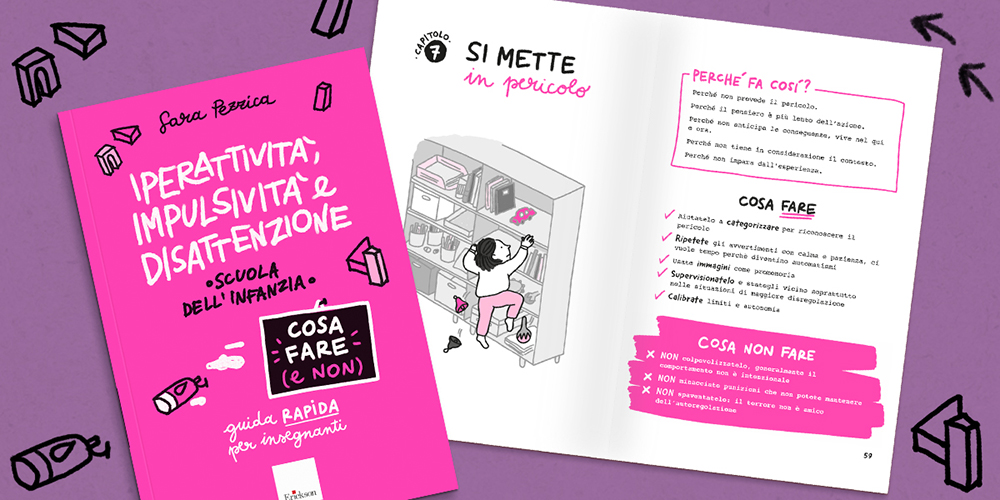
The preschool period is an important and sensitive time to intervene appropriately and create an inclusive environment that responds to the educational needs of all children and helps them to both improve their skills and protect them from the onset of further complications such as low self-esteem and anxiety. In the style of a Teacher Training notebook, practical and ready to use, Hyperactivity, impulsivity and inattention - What to do (and what to avoid) offers instructions and educational strategies to successfully deal with problem behaviours typical of children with hyperactivity, impulsivity and inattention in kindergarten.
BOOK STRUCTURE AND CONTENTS
The book comprises 15 chapters that analyze an equal number of problematic situations that are common in kindergarten, subdivided in 4 macro-sections: Hyperactivity, Impulsivity, Inattention, and The Emotional Aspects.
Each chapter contains:
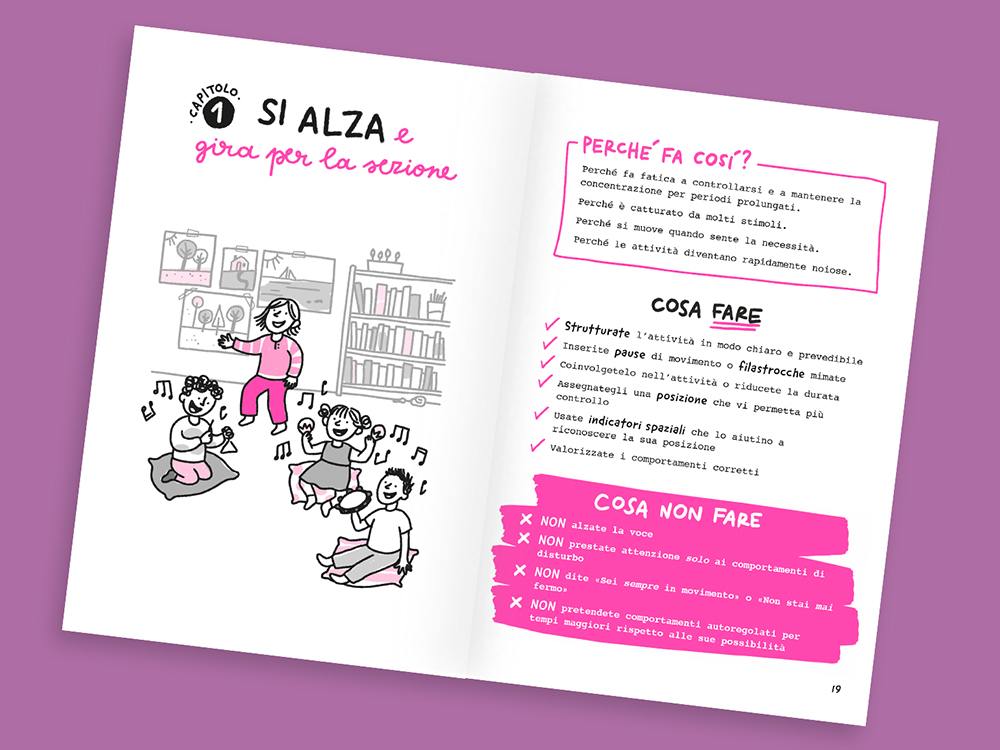
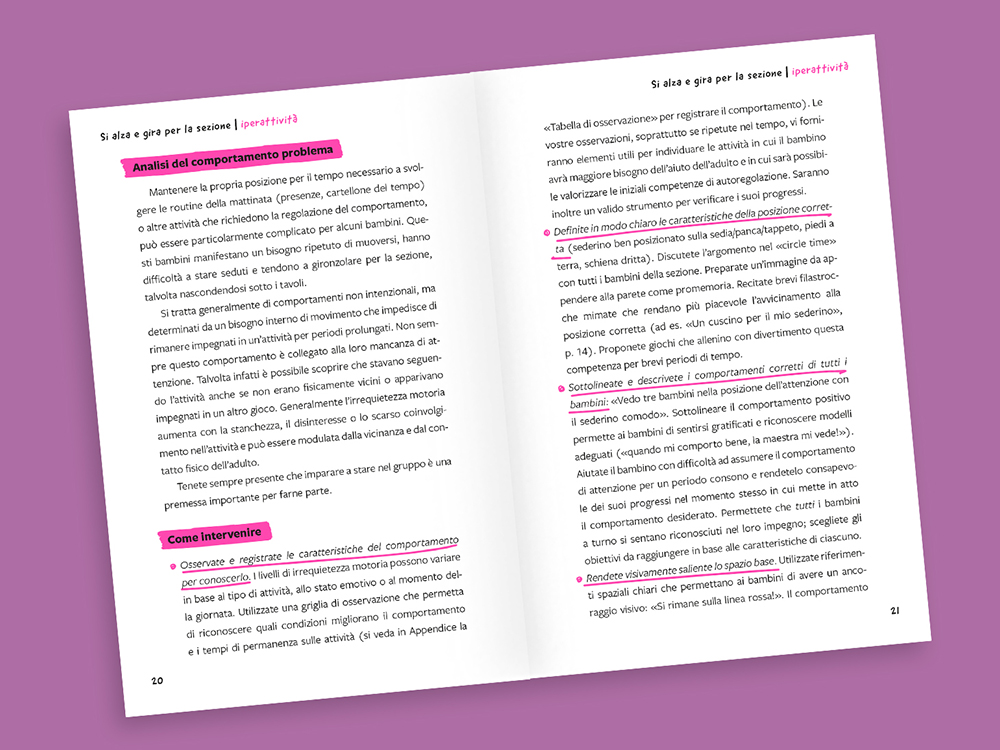
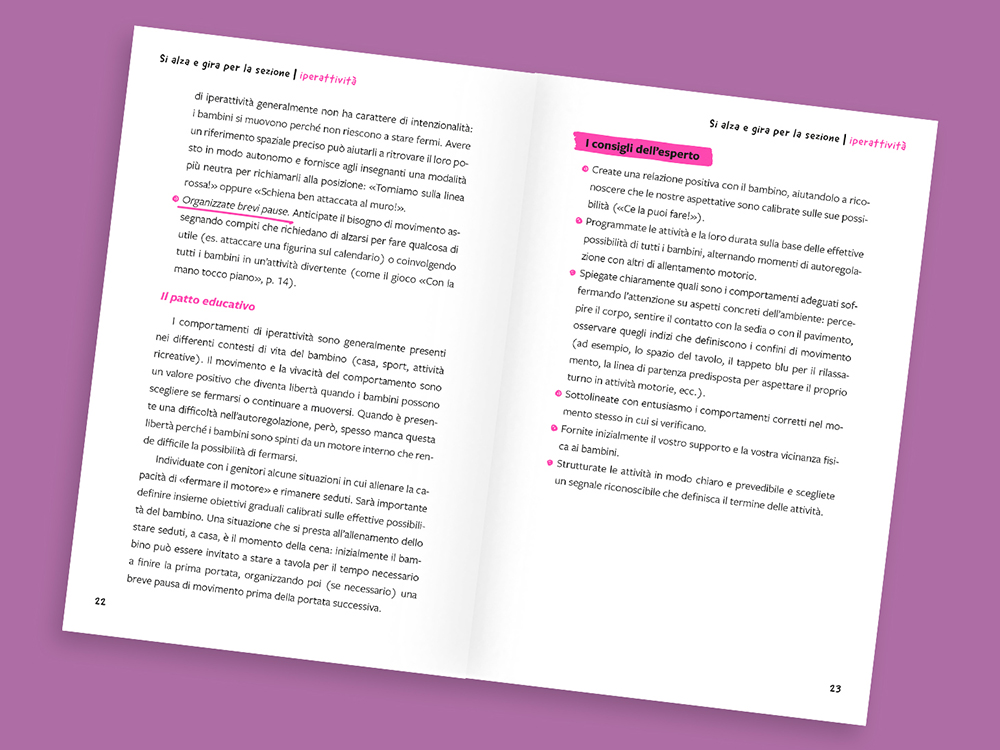
Each chapter closes with The educational pact, ideas to support parents in the educational process of their children, and Advice from the expert: reflections to further understand and enrich the teacher's "briefcase of educational tools".
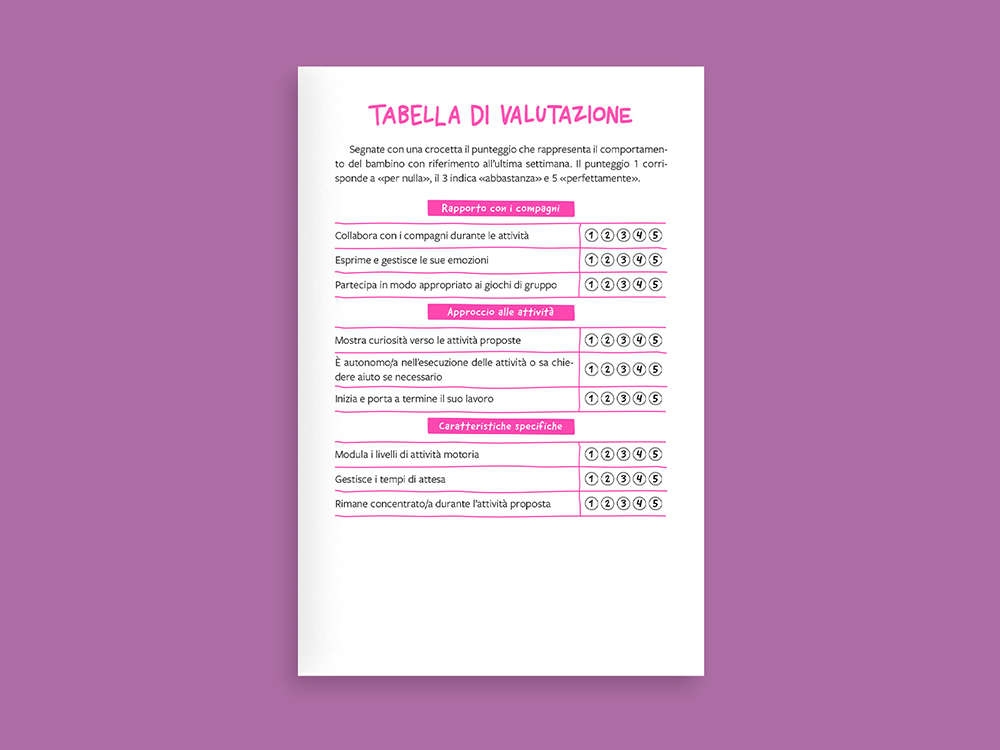
The Observation Chart in the Appendix completes the book.
Leaf through some pages that have been translated into English to facilitate your evaluation:
THE AUTHOR
Sara Pezzica Psychologist and psychotherapist with a cognitive-constructivist focus, she mainly deals with diagnoses and clinical interventions in the developmental age. President of the Italian Association of Attention and Hyperactivity Disorders (AIDAI) for the Tuscany region and National AIDAI Vice President. PhD in Developmental Psychology and lecturer in the training course for the Specialization for support activities at the University of Florence, she conducts teacher training courses for teachers and workshops for kindergarten, primary and lower secondary school pupils.